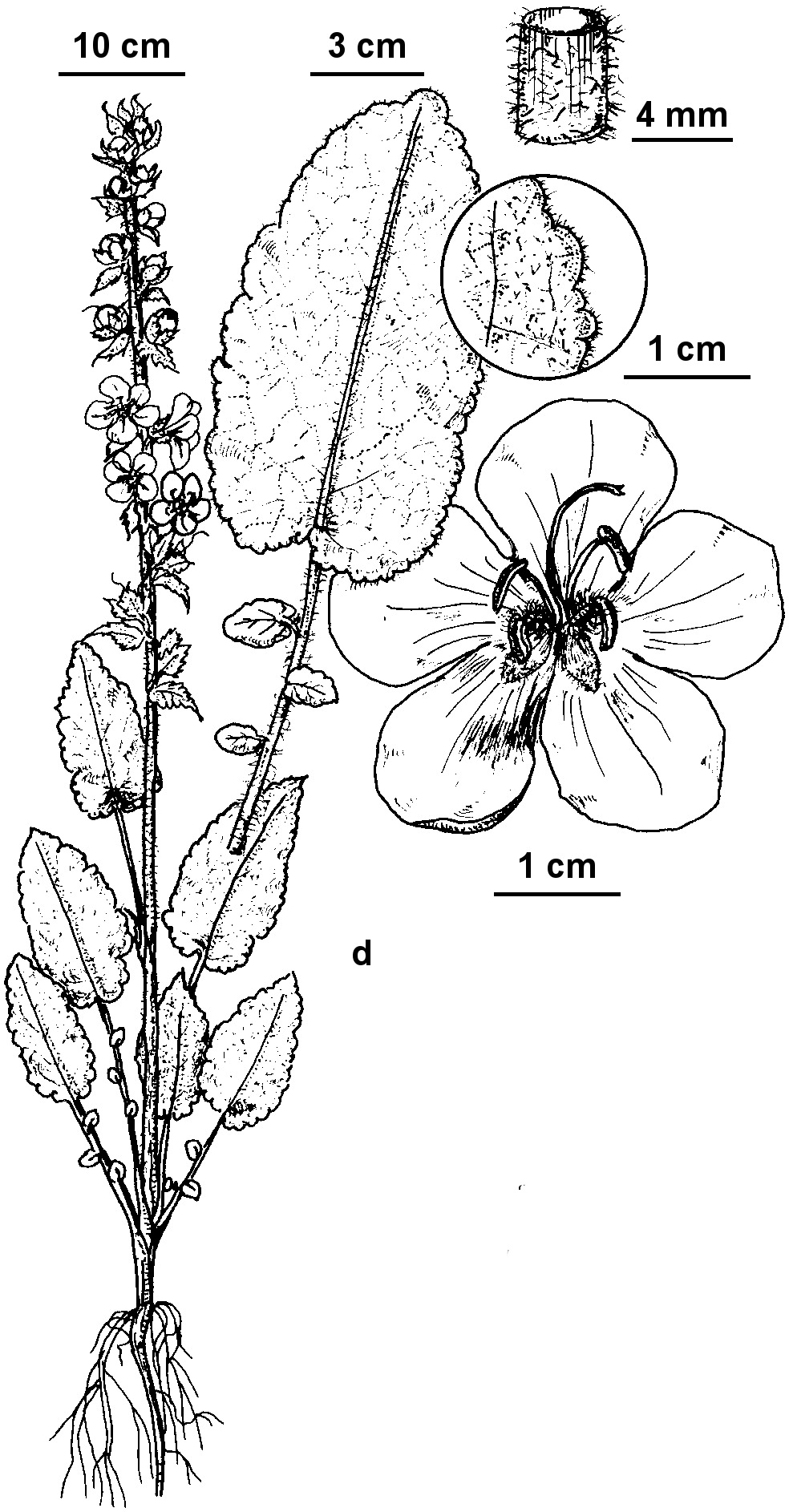Verbascum creticum
(L.) Cav. Cretan MulleinErect robust biennial 0.4–2 m high, moderately to densely covered by short glandular and longer eglandular hairs. Leaves bidentate to dentate, acuminate, often only weakly rosetted at base; lowest leaves lyrate-pinnatifid, 15–25 cm long, 4–7 cm wide, base truncate or cordate, distinctly petiolate; upper leaves ovate, stem-clasping. Racemes simple, 20–50 cm or more long; flowers solitary in bract axils; bracts 1.5–3 cm long; pedicels 3–5 mm long. Sepals ovate to narrow-ovate, unequal, 8–15 mm long; corolla 30–50 mm diam., yellow with a purple centre, upper lobes shortest; stamens 4 (no staminodes), lower pair longest, 14–16 mm long, filaments of upper pair villous, of lower pair glabrous, anthers of upper pair reniform, of lower pair c. linear, decurrent. Capsule broad-ovoid, 9–15 mm long, glandular-pubescent. Flowers Oct.–Nov.
GleP, VVP, VRiv, GipP, CVU, EGU, HSF, VAlp. Also naturalised WA, SA, Qld, Tas. Native to the western Mediterranean region. Scattered and rather uncommon in Victoria, recorded from weedy areas e.g. near Heywood, South Morang, Buchan.
Barker, W.R.; Harden, G.J. (1999). Verbascum. In: Walsh, N.G.; Entwisle, T.J., Flora of Victoria Vol. 4, Cornaceae to Asteraceae, pp. 498–500. Inkata Press, Melbourne.
 Spinning
Spinning


